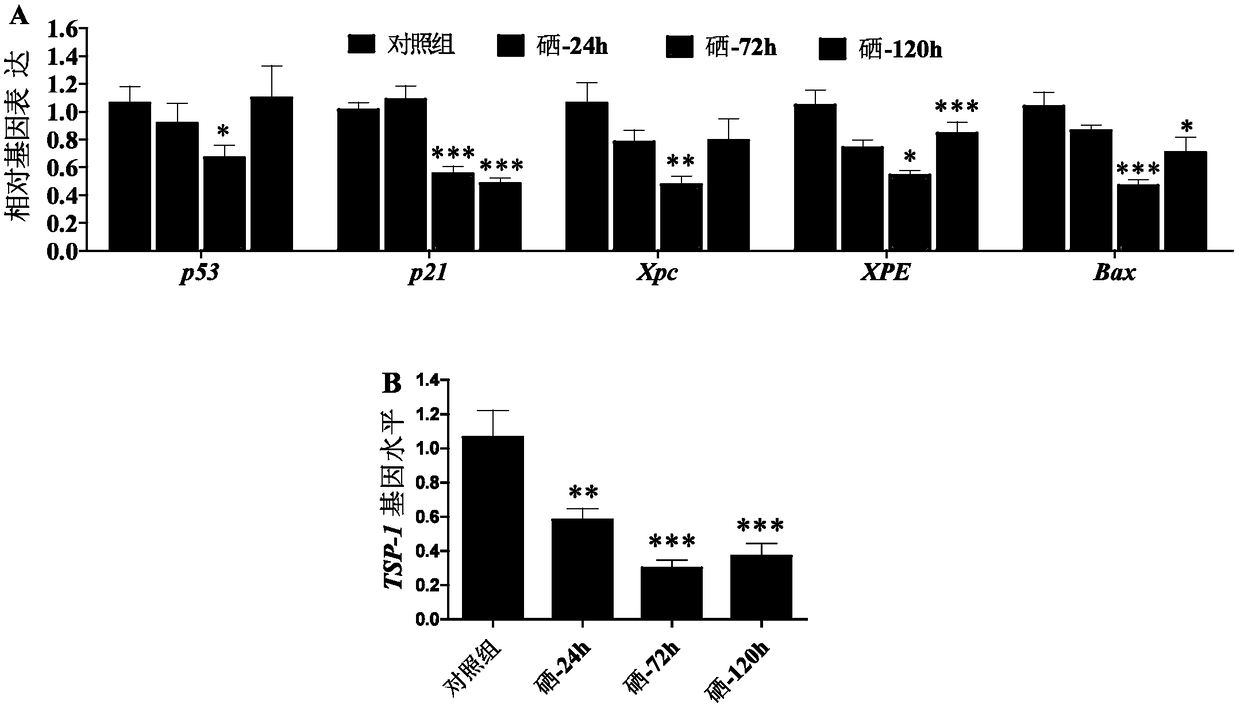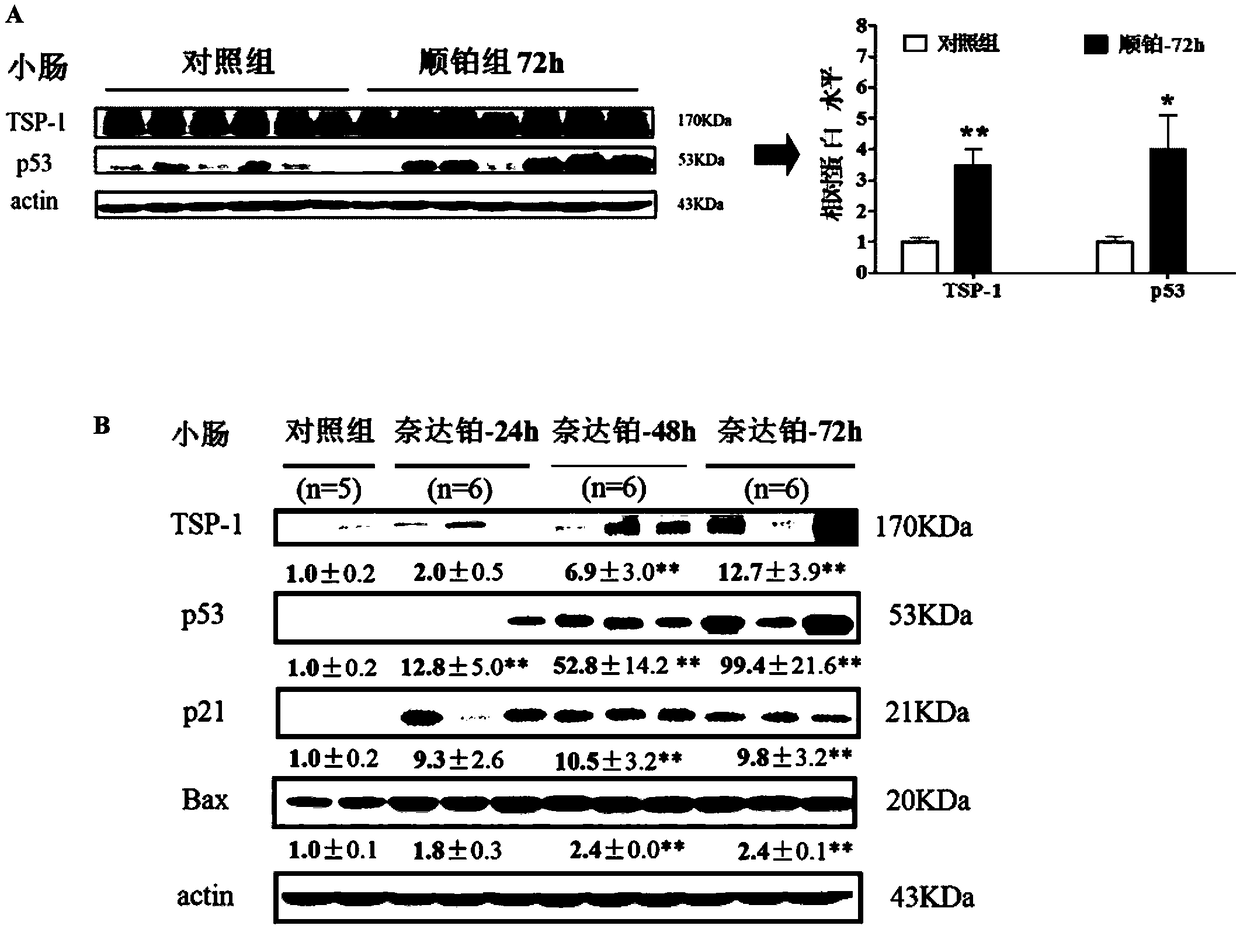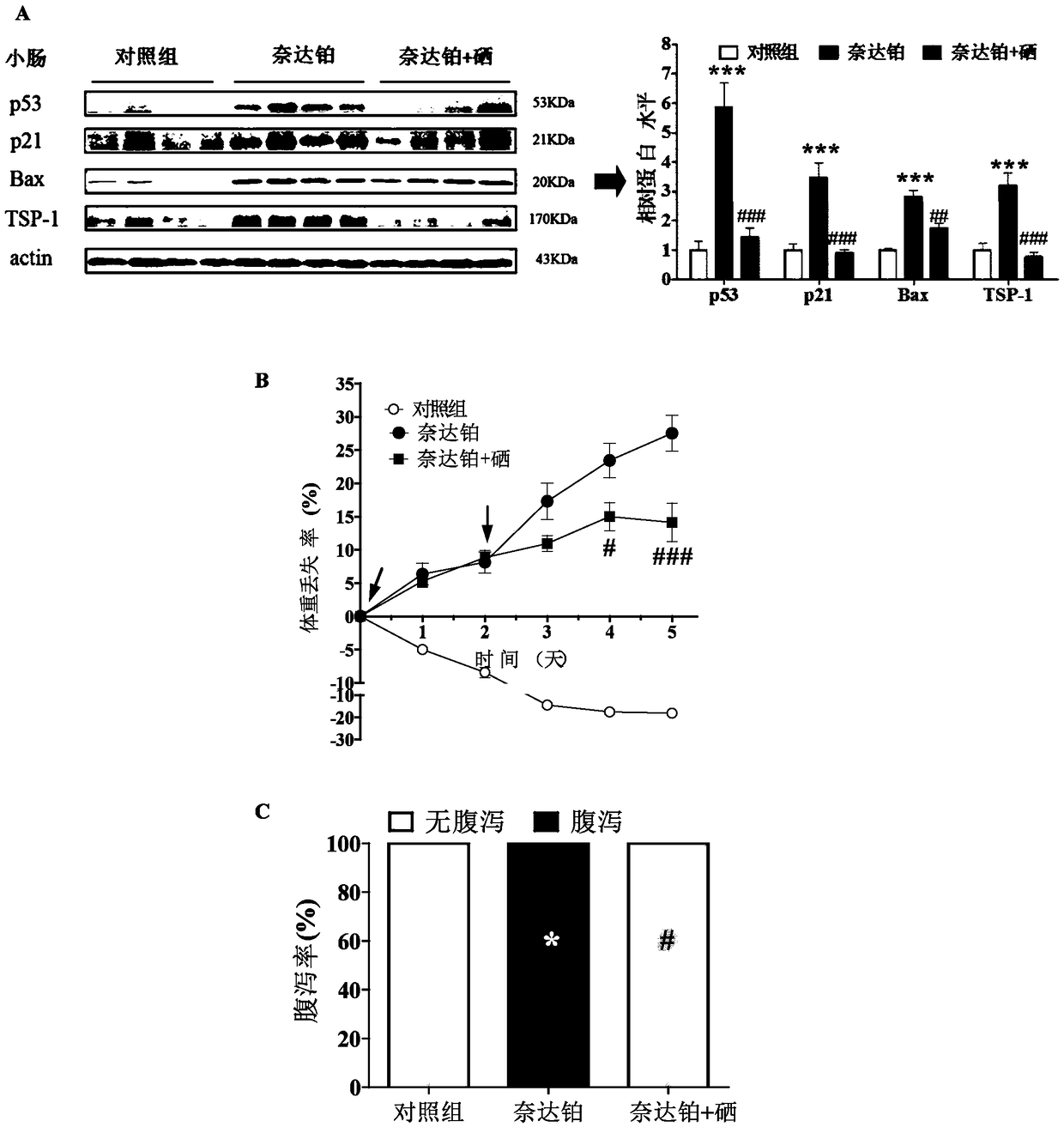Application of selenium element for preparing drug capable of relieving toxic and side effects caused by chemotherapeutic drug
A technology of selenium element and chemotherapeutic drugs, applied in the field of biomedicine, can solve the problems of reducing the curative effect of anti-cancer treatment, reducing the side effects of anti-cancer treatment, etc., and achieve the effect of improving the quality of life, reducing side effects, and reducing side effects
- Summary
- Abstract
- Description
- Claims
- Application Information
AI Technical Summary
Problems solved by technology
Method used
Image
Examples
Embodiment 1
[0023] Example 1 Nano-selenium inhibits p53 and TSP-1 effects
[0024] Experimental animals: male Kunming rats, weighing 25-26g. Dosing regimen: 32 mice were randomly divided into 4 groups, 8 in the control group and 24 in the nano-selenium treatment group. On day 0 and day 2, normal saline and 6 mgSe / kg nano-selenium were administered to the control group and nano-selenium treatment group, respectively. On the 5th day, the control group was sacrificed by dislocation. On the 3rd day, the 5th day and the 7th day (24h, 72h, 120h after the second gavage), 8 mice were randomly selected from the nano-selenium treatment group and killed by dislocation. After the mice were sacrificed, the small intestines were removed, and gene expression was detected by fluorescent quantitative PCR.
[0025] Experimental results and conclusions: figure 1 A shows that the p53 gene of the small intestine and the genes regulated by it (p21, Xpc, XPE, Bax) were significantly down-regulated after nan...
Embodiment 2
[0026] Example 2 Chemotherapy up-regulates intestinal p53 and TSP-1 effects
[0027] Experimental animals: male Kunming rats, weighing 26-28g. Dosing regimen 1: 13 mice were randomly divided into 2 groups, 6 in the control group and 7 in the cisplatin group. On day 0 and day 2, normal saline and cisplatin (9 mg / kg) were intraperitoneally injected into the two groups, respectively. All mice were sacrificed on day 5. Dosing regimen 2: 23 mice were randomly divided into 2 groups, 5 in the control group and 18 in the nedaplatin group. On day 0 and day 2, normal saline and nedaplatin (33 mg / kg) were intraperitoneally injected into the two groups respectively. On the 4th day, the mice in the control group were sacrificed; on the 3rd, 4th and 5th day (24h, 48h, 72h after the second injection of nedaplatin), 6 mice were randomly selected to be sacrificed. After the mice were sacrificed, the small intestines were taken, and TSP-1 and p53-related proteins were detected by Western Bl...
Embodiment 3
[0029] Example 3 Nano selenium reduces the toxic and side effects of chemotherapeutics by inhibiting the upregulation of p53 and TSP-1 induced by chemotherapeutics
[0030] Experimental animals: male Kunming rats, weighing 27-29g. Dosing regimen: 12 mice were randomly divided into 3 groups, 4 mice in the control group, 4 mice in the nedaplatin group, and 4 mice in the nano-selenium group. On the 0th day and the 2nd day, the nedaplatin group and the nano-selenium group were given normal saline and 6mg Se / kg nano-selenium, respectively, and half an hour later, both groups were intraperitoneally injected with nedaplatin (33mg / kg). On the 5th day, all the mice were sacrificed, and the small intestines of the mice were taken after sacrifice, and TSP-1 and p53-related proteins were detected by Western Blot. The state and body weight of the mice were observed every day, and the diarrhea was recorded.
[0031] Experimental results and conclusions: image 3 A shows that nedaplatin t...
PUM
 Login to View More
Login to View More Abstract
Description
Claims
Application Information
 Login to View More
Login to View More - Generate Ideas
- Intellectual Property
- Life Sciences
- Materials
- Tech Scout
- Unparalleled Data Quality
- Higher Quality Content
- 60% Fewer Hallucinations
Browse by: Latest US Patents, China's latest patents, Technical Efficacy Thesaurus, Application Domain, Technology Topic, Popular Technical Reports.
© 2025 PatSnap. All rights reserved.Legal|Privacy policy|Modern Slavery Act Transparency Statement|Sitemap|About US| Contact US: help@patsnap.com



